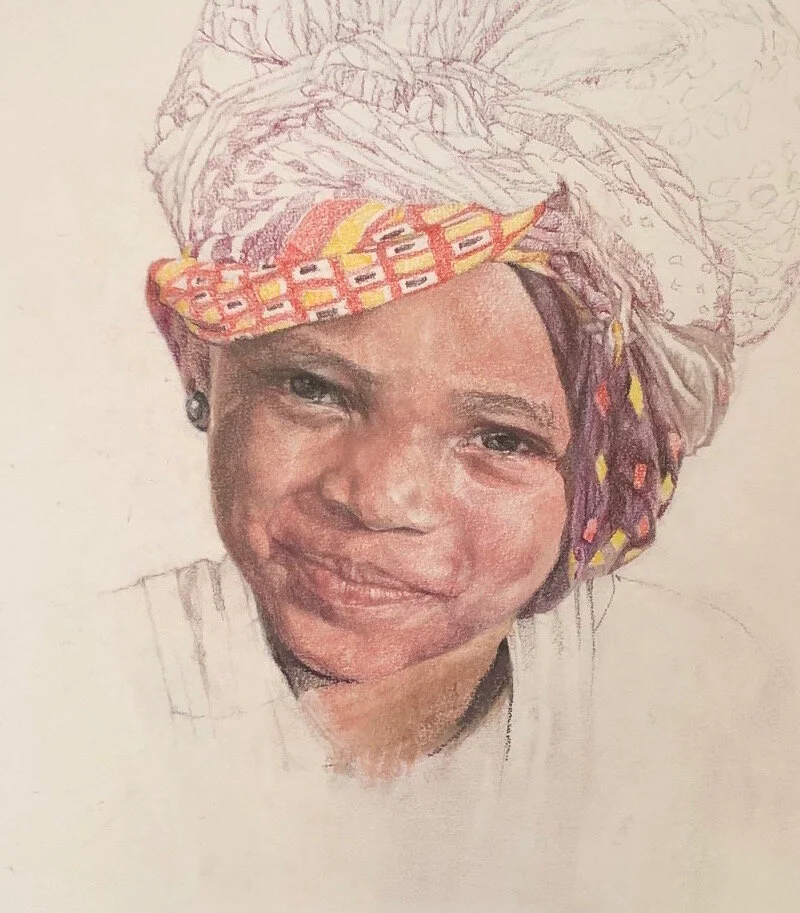
Chapter Nine
Culture: A Deeper Look
Culturally, an incredibly wide spectrum of beliefs and practices exist around the world. Cultural diversity adds a depth and richness to life . . . a way to grow and experience life through another’s eyes, to expand our ways of seeing, and to communicate through music, art, and food, and, hopefully, to build our sense of commonality beyond the barrier of language.
Very briefly, I want to touch on some of the differences of philosophy, beliefs, and practices relative to our connection to the Earth, to procreation, contraception, and sexuality. These are some of the primary issues that determine the growth of population.
I would like to begin with a look at the dominant culture of my country, the USA. In a general sense, a culture can be defined as “the way of life, and the way people do things” that is shared by a social group. In the previous chapters on capitalism and resource use, I have alluded to the emphasis and value that our current culture places on materialism and productivity. Our belief in an economic system of unlimited expansion and accumulation of wealth appears to quite often override other long-standing underlying belief systems and values, almost as though our belief in capitalism and its accompanying values has become the dominant religion.
In addition, we have developed beliefs that stem from a Judeo-Christian religious history (as delineated in the bible) of seeing humanity as the pinnacle of creation. Starting from that assumption alone, we can see that holding a view of humanity as superior to other life forms puts us in a position of disconnection from the rest of creation. From my perspective, we collectively suffer from this delusion of separateness, and that perspective and attitude has generated the cultural insanity we currently embody.
In many Native American traditions, there is a word used to describe this mental disease or sickness . . . wetico. I will discuss this concept later in Chapter 12, “Where Is the Disconnect?” as it is core to the denial and destruction that has allowed us to get so far off track as a species.
In most western cultures, there is value placed on our achievements, our monuments, our institutions, our technology, our arts . . . those signs that we have agreed indicate “civilization,” or advanced development. These external indicators generally carry more weight than the values of internal advancement, or the way in which we treat human beings, animals, plants, and the Earth itself.
Cultures pass on their mindset, beliefs, and practices through story and language . . . attitudes, values, morals, and goals passed through generations. Traditional stories of indigenous peoples share a theme of honoring all life . . . the plants, the animals, and the ancestors. Most native societies have historically encouraged non possessiveness and humility, while discouraging greed and excessive craving. The interdependence of all living things is acknowledged and supported through open expressions of thankfulness and kinship.
Cultural values passed on through story and ritual provide spiritual guidance as well as providing practical instructions on living. The stories told in our modern civilized cultures quite often reflect the value we put on the accumulation of wealth and power. Here in the United States our stories celebrate conquest . . . our heroes are wealthy, sexy, attractive, have power over others, and quite often use violence, even if in the pursuit of a perceived greater good. Our myths are about the rugged individual, the solitary cowboy, the movie star, the wealthy philanthropist. They are rarely about the benevolent, kind, or wise leader who chooses to live simply with the desire that everyone be equally valued (including all life forms).
It is horrifying to me that there are more guns than people in the US. With more than 120 guns for every 100 people, the US has the highest rate per capita in the world. Compare this to the Netherlands at 2.6, Japan at 0.3, and Taiwan at 0.³⁴ It is a disturbing sign of a culture gone awry. One only needs to watch the news to see the tragic results of this proliferation of easily accessible weapons.
When I started to think about our culture of self-gratification, it seemed to me that we almost exactly embody the definition of a “narcissist.” It is no wonder that an insane narcissist became leader of our nation . . . a person who unfortunately mirrors the mental state of a sizable portion of our population. The dysfunction of a narcissistic culture that glorifies self-gratification most certainly will affect that culture’s attitudes toward sexuality, its place in the culture, and what responsibilities accompany sexual expression and activity. As a result, we see a confused mix of repression of natural sexuality (due to religious and cultural beliefs), along with pornography, child molestation, and sex trafficking.
We have seen the widespread scandal of priests abusing children, and people like Jeffrey Epstein eluding any kind of consequences for decades. By exalting sexual gratification, distortions of sexual behavior proliferate . . . from anything that will “get you off” is acceptable, to the other end of the spectrum . . . anything in the sexual realm is taboo, possibly evil.
There is definitely a lack of clarity and confused messaging around sex . . . a muddled mix of repression, indulgence, and lack of practical information. Being sexy and desirable as a value is constantly reinforced in our movies, TV programs and advertisements, and in a capitalist economy, sex is commonly used to sell products and services.
Talking about sexuality in practical and realistic terms was not done in my generation. For many in my country, issues of sexuality (whether discussing the ability of partners to enjoy equal satisfaction, or discussing the responsibilities and consequences that come with being sexually active) are not directly addressed. The desire to be seen as attractive seems to take top priority. Basic sex education in my generation was limited to pictures of reproductive organs, and simplistic explanations of physiology. I know that has changed over the past decades, but I wonder how much is openly discussed—either in our institutions or families—about sexual practices, sexual pleasure, the use of contraceptives, and the consequences of sex without protection. The need for abortions seems to indicate that there is room for improvement in our society.
Most cultures have some discomfort and avoidance when it comes to practical issues that relate to sexual behavior, and that impedes the dissemination of information and the changing of social mores. Just as we often give a free pass to religious beliefs simply because it is someone’s belief, we tend to do the same with cultural practices. There exist traditional practices that are totally opposed to basic human rights . . . harmful practices such as genital mutilation and early marriage of girls.
Today, during the COVID-19 pandemic, the International Rescue Committee has reported a major increase in female genital mutilation, and they say that for every three months of lockdown there will be an additional 15 million cases of gender-based violence.³⁵ This kind of inhumane behavior needs to be called out by the global community. Long-held beliefs that are no longer relevant need to be examined in a new light.
Some cultures attach status to large families and shame to infertility. This attitude of “success” based on fertility accounts for the motivation to have many children, even in the face of extreme poverty.
Most cultures also share a history of centuries of patriarchy (or male domination), keeping women disempowered to make choices regarding family size and use of contraception. When men are in power, women play a subordinate role, and in many cultures there is a preference for having sons rather than daughters . . . sometimes leading to actual infanticide.
If personal beliefs and cultural practices are thought to be inviolable, they remain unchallenged. If they do not cause harm or injury to anyone, I would agree, but if you believe that contraception is a violation of the commandment to “be fruitful and multiply” even when the planet is at risk from excessive “multiplication,” then I disagree. Just because “it is your belief” should not outweigh common sense, humane behavior, and your responsibility to your community . . . in this case, the planet.
My query in regard to cultural practices of any origin is “why do we hesitate to call out unjust, unwise, inequitable, and harmful practices no matter what the tradition of that culture?”
Today, we are seeing a huge uprising in the US around issues of structural racism and police brutality. As the veil is being lifted to shine a light on the brutality and inequity that exists in our country, we are being educated daily about our true history and the very real need to change. It is a time to seriously think and talk about how things can be done differently, and to take action to initiate the changes that will move us toward justice and humane behavior. Can we not agree across cultures and countries on some bottom-line standards of practice and behavior? The world is in a state of unprecedented peril ecologically, economically, and politically. It is questionable whether today’s crisis will motivate us to create the commonality and connection we need to change the trajectory of humanity, but, even so, we are called to right action, to do what we can to envision a better way of living.
“The bond of our common humanity is stronger than the divisiveness of our fears and prejudices.”
— Jimmy Carter


